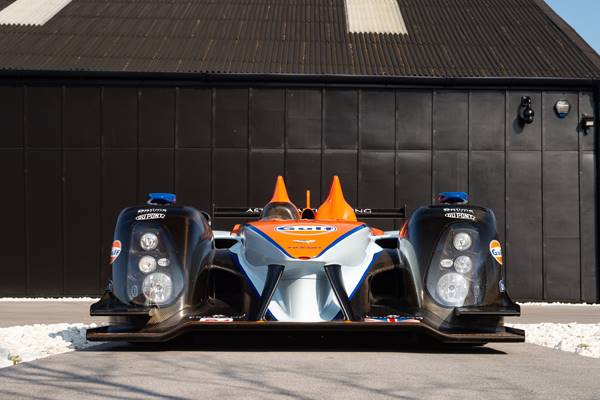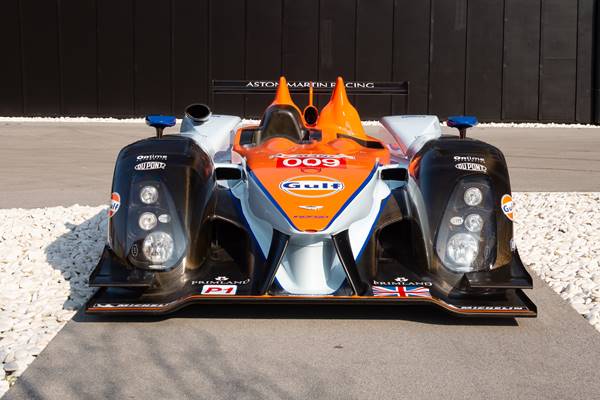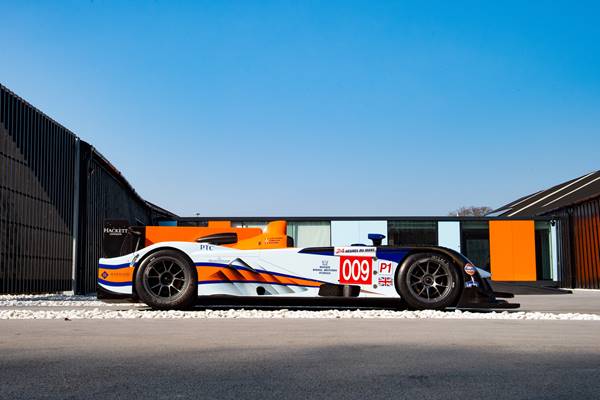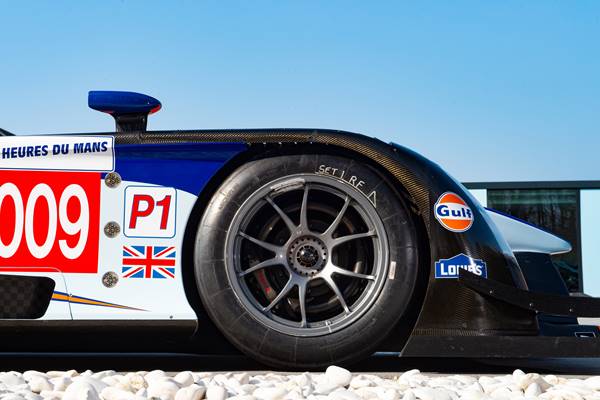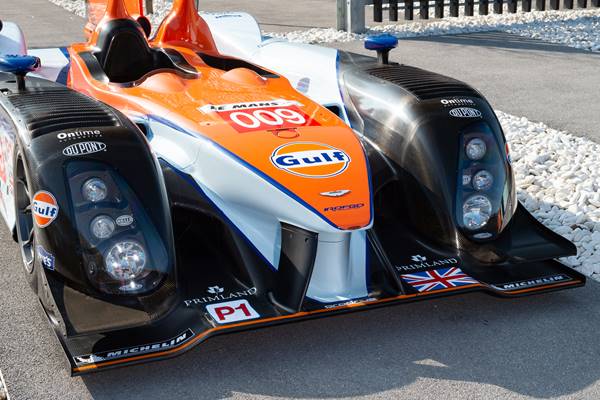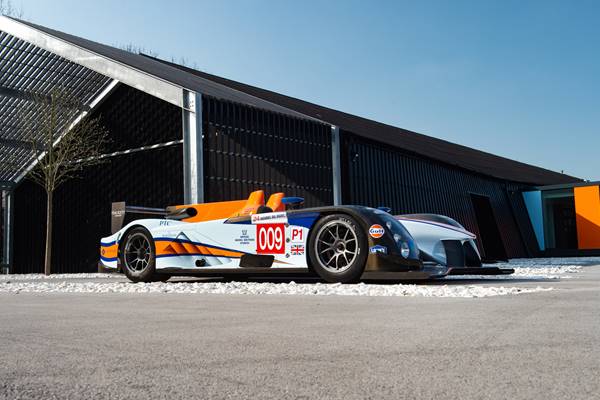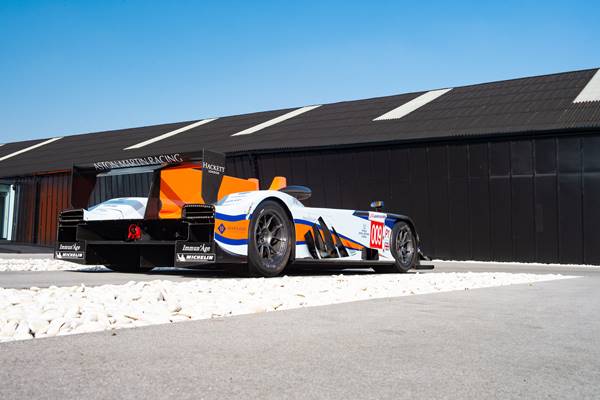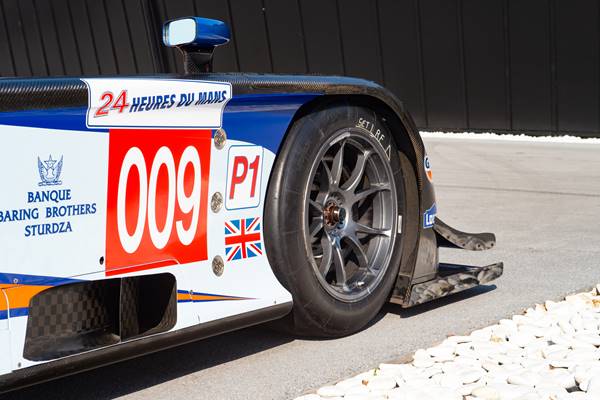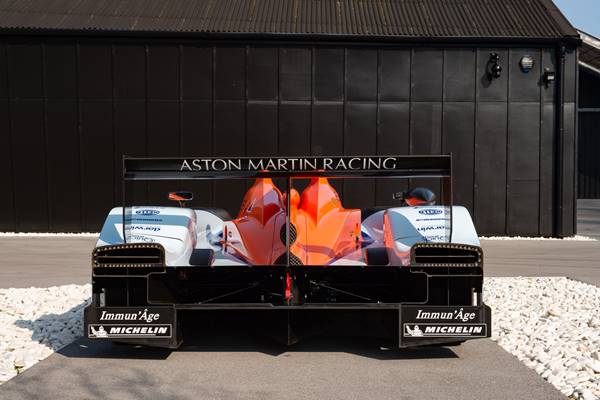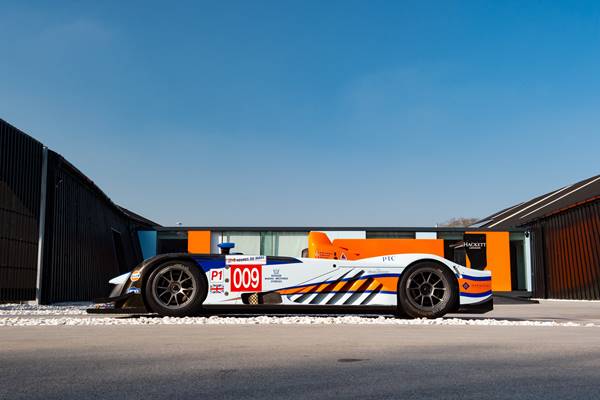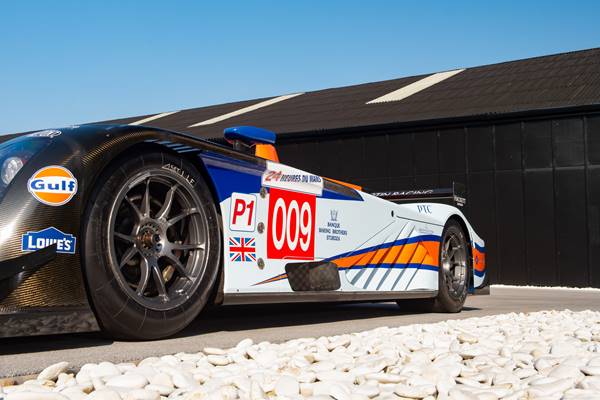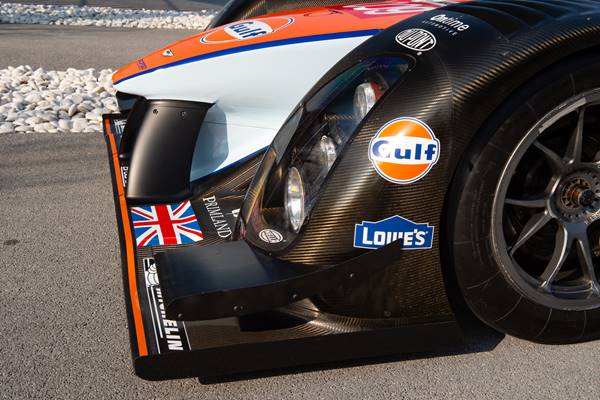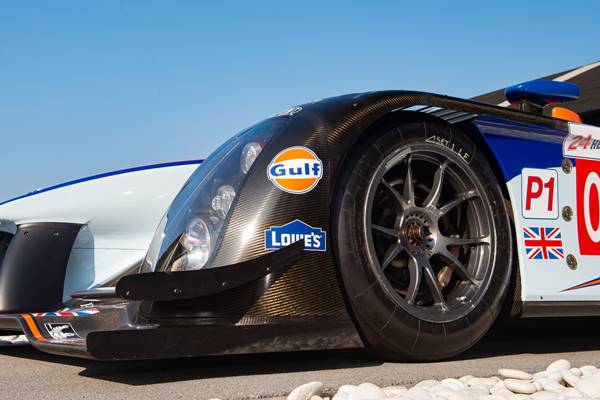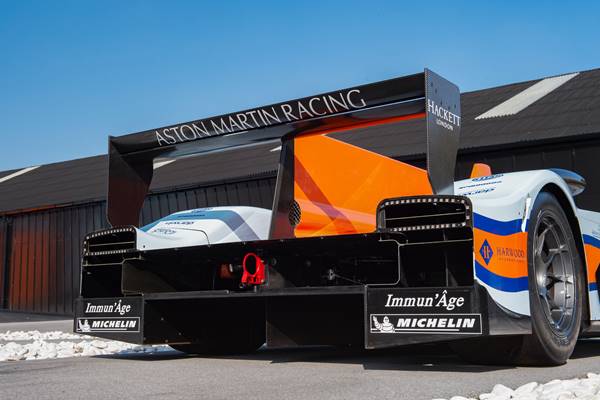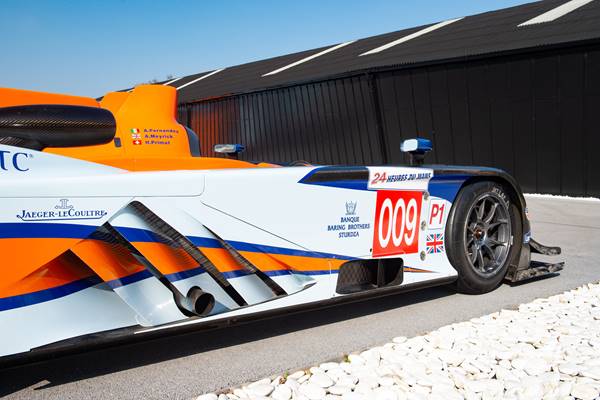A raft of new rule changes for the 2011 season caused the senior sports racing car contenders to rethink their priorities. With these in mind, Audi and Peugeot both opted for closed cockpit chassis and turbo-diesel power - V8 in Audi’s case and V6 for the Peugeot. Aston Martin, however, chose a very different path for their Prodrive-built B09/60 replacement, the AMR-One, opting for a light (900kg) open cockpit carbon monocoque chassis powered by a turbocharged 2.0-litre, straight-six petrol engine. Though lacking the aero profile of the Audi and Peugeot, this specification did offer a number of inherent advantages over its rivals - for example, an open cockpit car is lighter, offers better visibility and avoids the complications and expense of designing and constructing ventilation systems ect. It also makes for dramatically faster driver changes. In keeping with the new efficiency focused regulations, the newcomer featured a prominent blade-fin behind the driver, while the engine drove through a semi-automatic shift, six-speed Xtrac transmission.
The initial intention was to build six AMR-Ones, but early problems meant that number was never realised. In the end only two races were contested. The first was the 6-Hours of Castellet, where the lone entry of chassis DBR1/3/1 driven by Stefan Mücke, Darren Turner and Harold Primat finished an unclassified 29th overall. The second and final outing for the team was the Le Mans 24-Hours race, for which DBR1/3/2 - the former’s trio of pilots was Harold Primat, Adrián Fernández and Andy Mayrick, while the later was shared by Stefan Mücke, Darren Turner and Christian Klien. Sadly they were the first two cars to retire from the event. DBR1/3/1 lasted a mere two laps, while DBR1/3/2 managed two more, finally retiring after four agonising hours in the pits.
After due consideration, Aston Martin decided to cease development of the AMR-One and focus once more on their GT Programme, so the cars were sold off. We are left to wonder what could have been, had those fabulous-looking machines enjoyed the research and development they arguably deserved.
